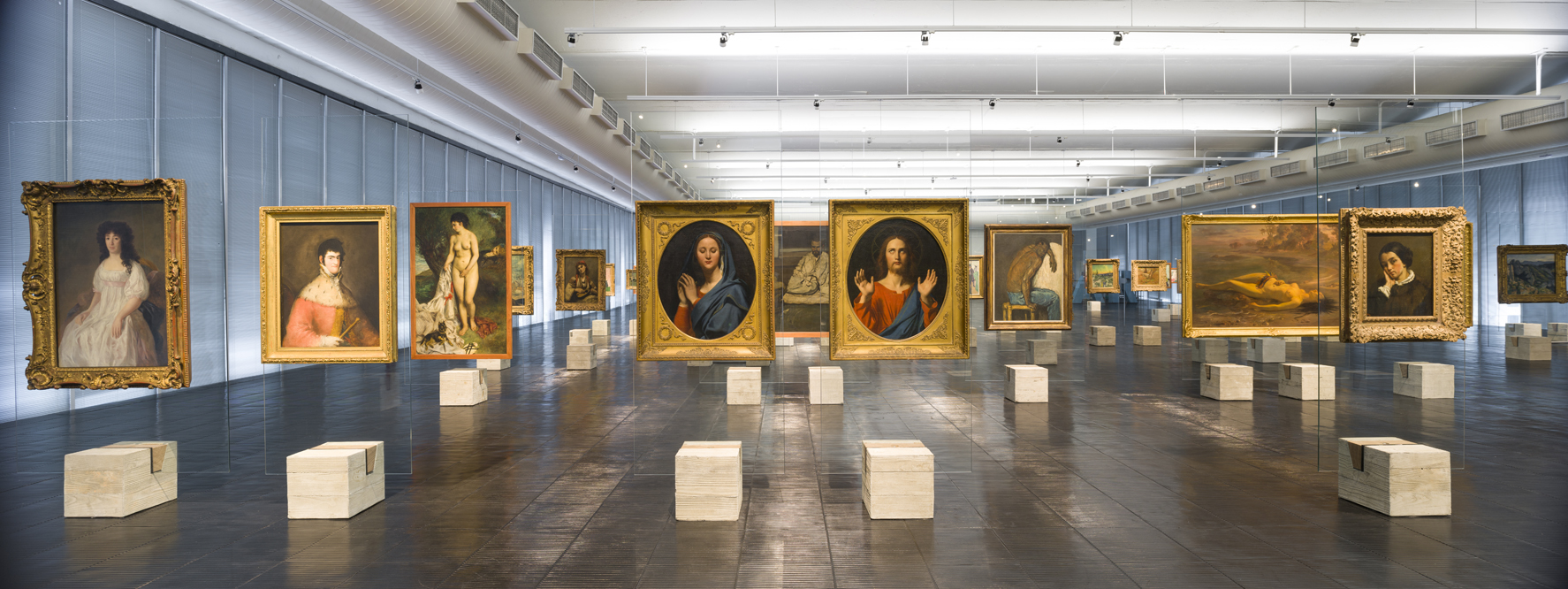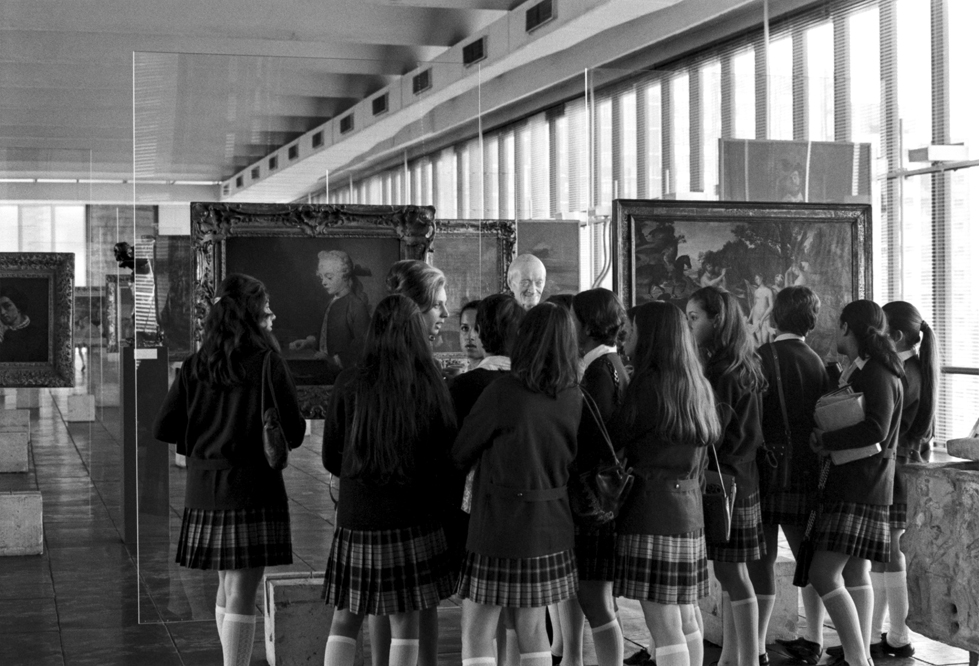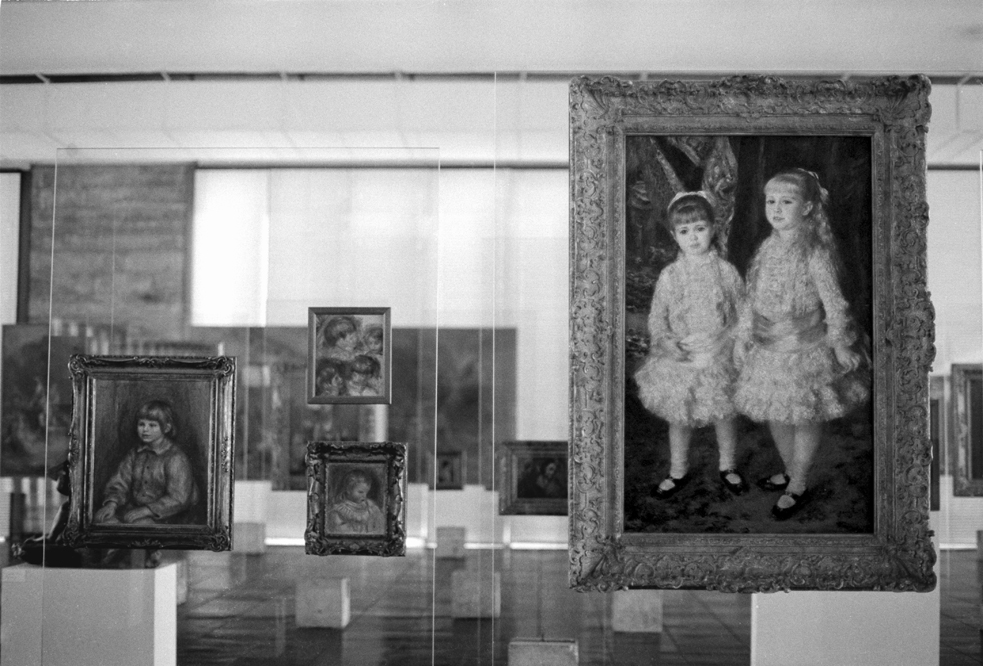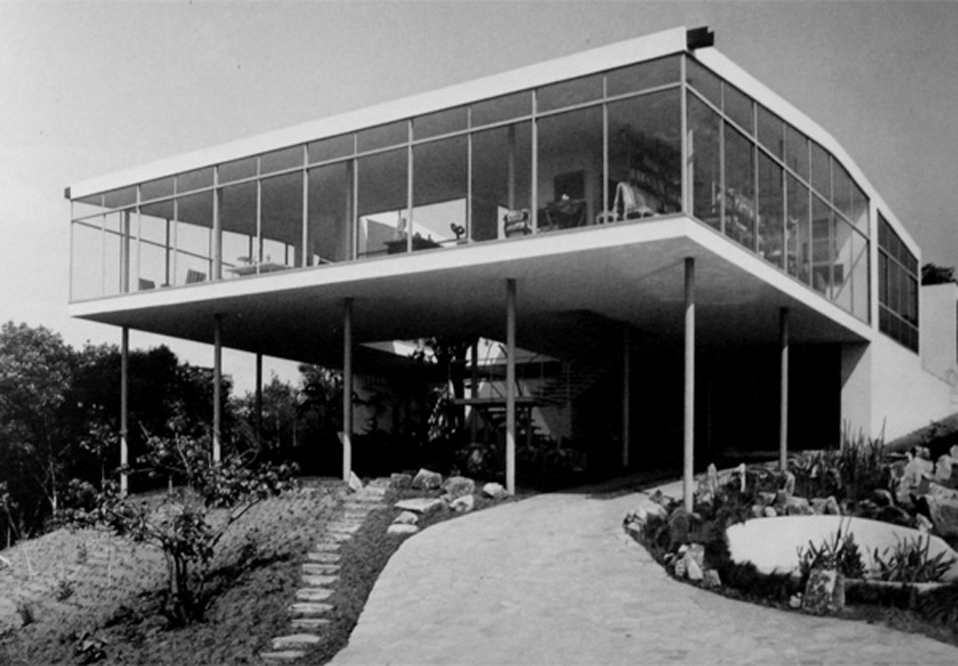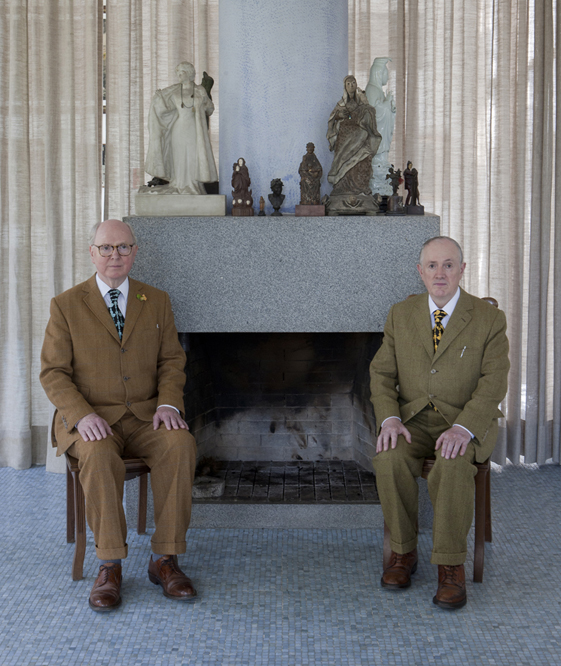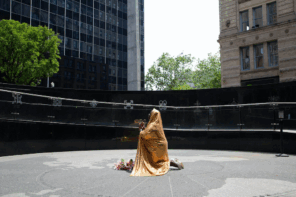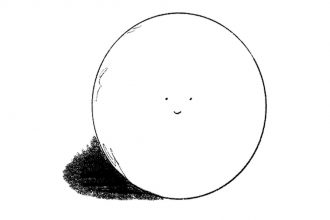Imagine the ghost of Lina Bo Bardi banging the ceiling with a broomstick to annoy whomever’s making a ruckus upstairs. Now imagine it’s not her neighbors’ apartment, but her own.
Based in Sāo Paulo and established in 1990, the Bo Bardi Institute was founded to protect the legacy of the Italo-Brazilian architect and designer Lina Bo Bardi, and promote and disseminate architecture, design, urbanism, and Brazilian folk art. Another inciter for its foundation was Bo Bardi’s famed Glass House (built in 1950-51 and declared a cultural heritage site in 1987), her first milestone design. (The institute wanted to transform it into a space of “dialogue and [an] exchange of knowledge.” The institute also cares for the work of Pietro Maria Bardi, Lina’s husband, but positions him – surprisingly, considering his input – in the background.) In 2014, Christian Dior hosted a party in Glass House with dishes cooked by Thierry Marx, music by Cris Oak, and a lot of Veuve Clicquot. But it wasn’t a party aligned with Bo Bardi’s work or ethos or that of the institute (though Dior was said to have a love of architecture, and Bo Bardi was once photographed standing beside his models following a show in Sāo Paulo, in 1951). Indeed, the social calendar for the Bo Bardi Institute has become a roster of parties to which the late architect’s legacy has only cursorily been invited.
The richness of that legacy (Bo Bardi was born in Rome, 1914, and died in Sāo Paulo in 1992) is beyond question. Hosting and combining elements that had not previously been considered in architecture, she introduced ecology and nature to the discipline (Glass House, the Bahian Modern Art Museum), planned spaces to ease exchange between visitors (SESC Pompeia), and conceived of museums with didactic functions (the Bahian Modern Art Museum). She developed an architect’s mission that was inclusive and integrating (she designed the furniture of her buildings). She also incorporated the popular and the vernacular, through, for instance, a private collection of Brazilian folk art: these are some of the reasons why, a quarter-century after her death, Lina Bo Bardi has became a trend.
Since the turn of the millennium, a multitude of exhibitions and contemporary artists have used Bo Bardi as a reference, or her ideas as a starting point. One of the first was the ubiquitous Hans Ulrich Obrist, who invited a group of artists – his usual suspects, including Dominique Gonzalez-Foerster, Gilbert & George, Philippe Parreno, Rirkrit Tiravanija – to occupy Glass House in The insides are on the outside (2012). Since then, there have been many: Lina Bo Bardi 1OO – Brazil’s Alternative Path to Modernism (Architekturmuseum der Technischen Universität München, 2014), the 33rd edition of the Panorama (MAM São Paulo, 2013), Lina Bo Bardi, Architecture for All (the Watari-Um Museum of Contemporary Art, Tokyo, 2015), Lina Bo Bardi in Italia, “Quello che volevo, era avere Storia” (Centro Archivi MAXXI Architettura, Rome, 2014-15). These are just a few. Two are on display currently: curator Naomi Blager’s itinerant Lina Bo Bardi: Together (2012-present), and Another Reality. After Lina Bo Bardi (Stroom Den Haag, Netherlands).
Indeed, several curators and artists have transformed Bo Bardi into a fetish, elaborating on her work, disassociating from her aesthetic and legacy while retaining her charged citation. Consider Gilbert & George’s contribution in Obrist’s exhibition, By the Fireside of Lina Bo Bardi, a photograph in which the duo proposes the usual: just posing; or a work by Mariana Castillo Deball & Manuel Raeder, Bichos fantásticos (Fantastic bugs), in Another Reality, in which they invited a local artist to create papier mâché insects, “like the insects and animals that occupy Lina’s buildings.” These are two graphic examples where it’s hard to link the art with the figure or the contributions of the architect. An aura has undeniably been elevated, and set adrift.
The problems in the recovery of her famed display system, the “crystal easels,” in the exhibition Acervo em Transformaçao (Picture gallery in transformation) at Museu de Arte de São Paulo (MASP), are of a different nature. The exhibition retrieves the iconic glass panels that Bo Bardi designed and exhibited at the opening of the museum in 1968, until their withdrawal in 1996. Through that system, Bo Bardi resurfaced art objects dating from the fourth century B.C. until the nineties, “floating” them in glass panels anchored by a concrete block, positioned in no chronological order, and revealing the back of the rack. “My intention has been to destroy the aura surrounding museums,” said Bo Bardi at the museum opening. Her device disrupts the contemplation of works hanging on white walls, the parade of spectators in parallel fashion, and diffuses the hierarchy between artists, or between artistic periods. She was among the first to undo the sacralisation of the museum experience. With this juxtaposition of iconic works, we can look in front of the glass panels in the present reinstallation, squint our eyes, and see the dancing characters in a drawing by Toulouse-Lautrec being watched by Gauguin’s self-portrait, an Ingres Christ imploring the sky besides a Degas ballerina, or a Rembrandt figure paired with the legs of a spectator. Bo Bardi’s desire, ambitiously, was to popularize and make accessible “high culture.” She was “making walls transparent,” and through that daring act of showing the back of the picture, revealing notes, records, and processes.

View of MASP’s collection exhibition space, on Avenida Paulista, 1970s. Photo: Instituto Lina Bo e Pietro Maria Bardi, by Paolo Gasparini.
Bo Bardi’s radical presentation was first shown one year after Raid the Icebox I, the playful mess that Andy Warhol curated in the Rhode Island School of Design Museum, in which he exhibited objects of common use with masterpieces in the museum’s storage areas; and anticipated disruptions or interventions on museum collections (like that of Fred Wilson, 1992, at The Contemporary), by several decades. The system designed by Lina Bo Bardi in 1958 and displayed in 1968 was a pioneer experience of display culture.
While MASP’s recovery of Bo Bardi’s display system is not as radical today as it was in 1968, it has a great value at a time of crisis or transition in museums, where management teams strive to find ways – sometimes counterproductively – to raise creative and original projects, perform self-criticality, and restore life to their collections. However, it seems that the directors of MASP, the Bo Bardi Institute, and some foreign curators are not interested in the refractory aspects of her work, but in co-opting her fame and image. (Interestingly, the text for this exhibition presents an odd defense, reading, “The return of the easels is not a fetishistic or nostalgic gesture in regard to what has become an iconic exhibition display device, but should rather be understood as part of a programmatic revision of Bo Bardi’s spatial and conceptual contributions to museum practice.”)
The self-reflexivity we see in current museum practices results from a drift that followed the Brazilian Golden Years in the nineties and the early “noughties,” incited by budget cuts that caused the disappearance of projects including Casa Daros, in Rio, or the diminishing of events as the Mercosur Biennial. In a short period, Brazilian museums turned from organizing powerful retrospectives of national and international artists and collective exhibitions with commissioned works, to a time of eternal shows and endless restagings of their own collections. This is the case with MASP, which is hosting exhibitions that lasts five months, and several “re-visionings” of their collection. Beyond these coping tactics, their recovery of Bo Bardi’s original display design suffers from several forms of neglect or misdirection.
The first issue is structural. The glass panels have several shortcomings; reflections caused by illumination, or an inability to show large-format artworks because of technical limitations of the Bo Bardi system. Further, the floor of the museum has a slight bulge. This makes the panels move, imperiling the works and disrupting the line. Because of this, the curator of the MASP during the nineties, Luiz Marques, ordered their withdrawal in 1996. But the problem wasn’t resolved, and didn’t, apparently, stop the MASP from re-launching the exhibition.
The second issue is of a conceptual order. At the entrance of the exhibition, a text introduces the project, and it makes the following reference: “The exhibition’s focus on figurative art reflects the history of the collection and the interests of Bo Bardi and Bardi, who resisted the hegemony of the abstract tradition in Brazil in the 1940s and 1950s. They were both wary of abstraction’s potentially depoliticizing effects, in the context of the promotion of geometric abstraction by the US through its Good Neighbour policy during the Cold War.” The architects’ resistance to this political context has been well documented, but it was the singular drive and initiative of Pietro Maria Bo Bardi, in fact, not Lina: she was more focused on her innovative missions linked to architecture and display culture. The manipulation or misalignment of Lina Bo Bardi’s work with historical record, on this occasion, gives her credit for someone else’s initiative, and backgrounds her aesthetic achievements. This kind of warped record continues despite the significant number of Bo Bardi experts and specialists throughout the globe.
Agnaldo Farías, art critic and curator, knows the background of this manipulation well: “There is a plan to elevate [Lina’s] great reputation. The MASP group prefers to exalt her qualities instead of Pietro María Bardi’s.” He continues, “Notice that this is not a conspiracy theory, but the abasement of Pietro and the elevation of Lina is part of a historical revision much in the like of groups that have interest in valuing those who value the autochthonous.” It’s confusing how, today, after decades of study and analysis on the work of Lina Bo Bardi, we are far from confident about certain facts and motivations in her practice.
Lina Bo Bardi’s “elevation” should not be carried through foreign star curators who deviate from her figure, add to her catalogue political battles in which she never participated, or recreate her projects despite doubts about their structural integrity. It would be more interesting and certainly more prudent to invite new critical or self-reflexive projects that might mirror or update her own, and work for the right conservation and dissemination of her legacy.
Lina Bo Bardi’s original mission – “to destroy the aura surrounding museums” – has not been successful: museums continue, instead, to destroy her work. These are issues that should be rectified by the Bo Bardi Institute, not propelled.
The Glass House / Workshop “filming architecture,” 2014. By Romullo Baratto.

